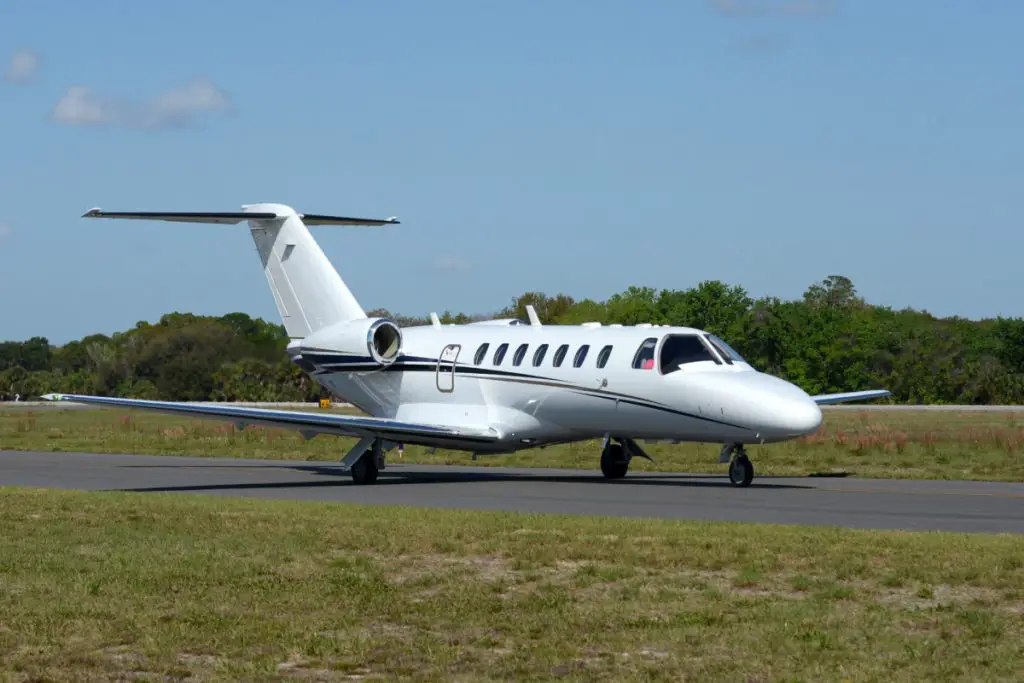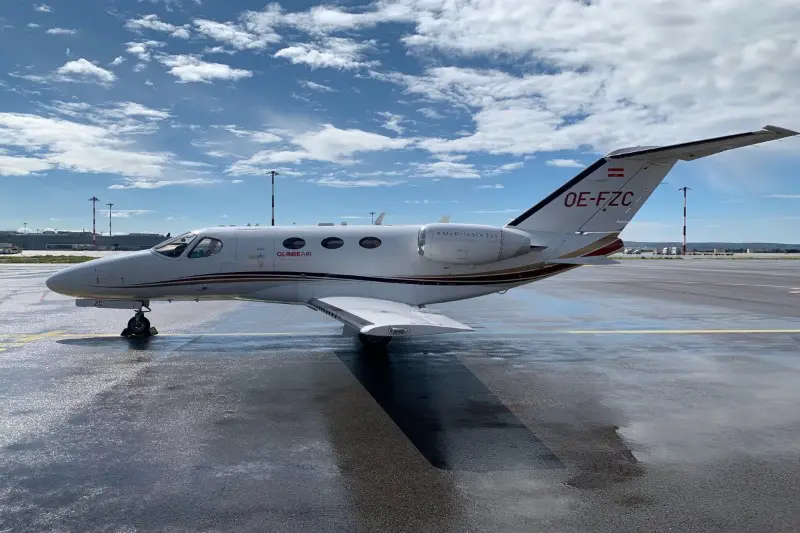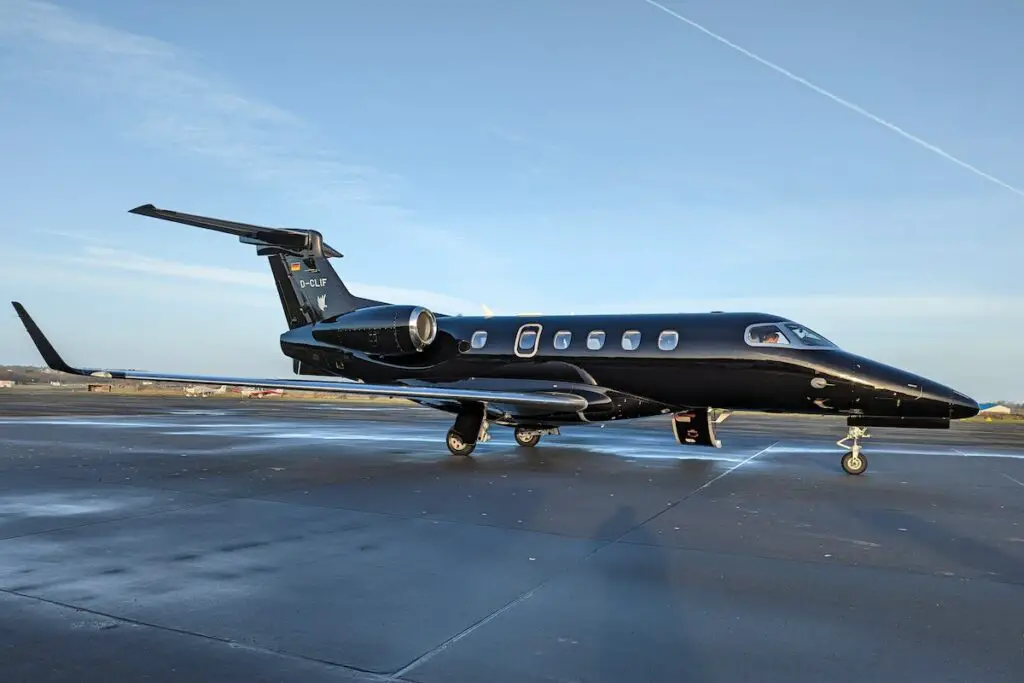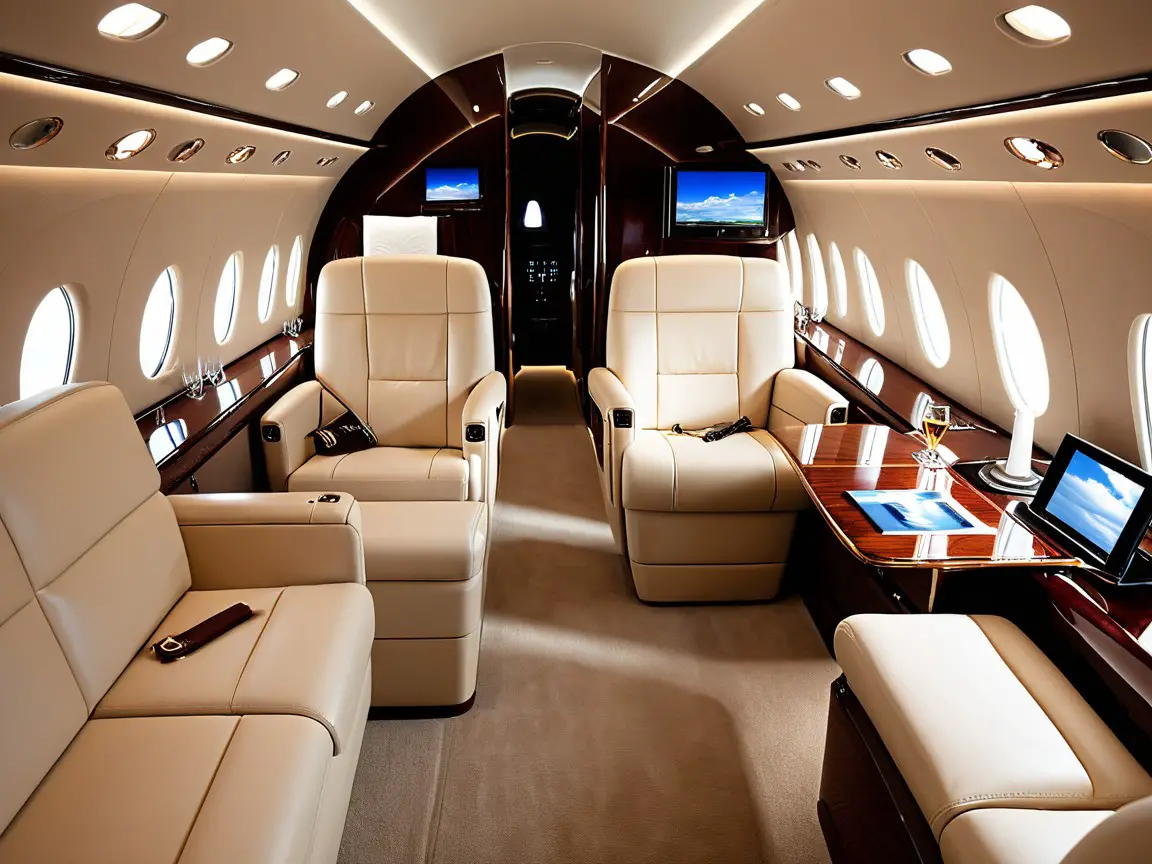Understanding the private jet lifespan is crucial for owners and operators alike. This will help you understand your aircraft better.
The private jet lifespan typically ranges from 25 to 30 years, depending on maintenance, usage, and technological advancements that may impact its operational efficiency and safety.
Contents
This topic holds significant importance in the aviation industry, as it directly impacts investment decisions, maintenance costs, and overall operational efficiency.
Private jet lifespan refers to the duration a jet can be safely and economically operated before it reaches its retirement age.
Private jets are built to withstand rigorous use and are designed with longevity in mind.
However, various factors such as flight hours, cycles, maintenance practices, and technological advancements play a role in determining their lifespan.
By delving into this subject, we can gain insights into the average lifespan of different aircraft models and better understand how aging affects performance and safety.
Stay tuned as we explore various aspects related to private jet lifespan – from factors that influence longevity to strategies for maximizing aircraft value over time.
Understanding these dynamics will empower both current and potential private jet owners with valuable knowledge for making informed decisions about their investments.

Understanding the Private Jet Lifespan
To fully grasp the concept of private jet lifespan, it’s essential to understand how long these luxurious aircraft can remain in service.
Several factors contribute to a private jet’s longevity, including maintenance and usage patterns.
This understanding is crucial when considering purchasing decisions and ensuring that the investment made is worthwhile.
Defining the Concept of Private Jet Lifespan
The private jet lifespan refers to the duration an aircraft can effectively operate before requiring significant repairs or reaching its end-of-life stage.
Unlike commercial airliners that are frequently retired after a certain number of flight hours.
Private jets have a more flexible lifespan due to varied usage patterns and maintenance practices.
Factors that Contribute to a Private Jet’s Longevity
Several factors influence how long a private jet can continue operating at optimal levels:
- Maintenance: Regular and meticulous maintenance plays a vital role in extending a private jet’s life. Adhering to recommended service intervals, addressing minor issues promptly, and following manufacturer guidelines for inspections and repairs are all essential in preserving an aircraft’s condition.
- Usage Patterns: The frequency and type of flights impact an aircraft’s lifespan. Jets used for shorter trips tend to experience less wear and tear compared to those constantly flying long distances. Proper handling during takeoff, landing, and taxiing can significantly reduce stress on the airframe.
- Age: While age alone does not determine an aircraft’s condition or remaining lifespan, older jets may require more extensive maintenance or upgrades due to technological advancements or changing regulations.
- Environment: Operating conditions also affect an aircraft’s longevity. Harsh climates with extreme temperatures or high humidity levels can accelerate wear on components such as engines, avionics systems, and airframes.
How Understanding the Lifespan Can Inform Purchasing Decisions
Knowing the expected lifespan of a private jet is crucial when making purchasing decisions:
- Resale Value: Understanding how long a particular model is likely to remain in service can help determine its resale value. Buyers are more inclined to invest in aircraft with longer lifespans as they offer more years of potential use.
- Future Maintenance Costs: Knowing the lifespan can also provide insight into the anticipated maintenance costs over time. Older aircraft may require costlier repairs or upgrades, impacting the overall operational expenses.
- Technology Advancements: The rate at which technology evolves can affect an aircraft’s desirability and compatibility with future airspace regulations. Considering the expected lifespan helps assess whether a jet will remain technologically relevant in the coming years.
The Role of Maintenance in Extending a Private Jet’s Life
Maintenance plays a crucial role in extending a private jet’s life by ensuring its systems and components are functioning optimally:
- Scheduled Inspections: Regular inspections help identify potential issues before they become major problems, allowing for timely repairs or replacements.
- Component Overhauls: Periodic overhauls of critical components such as engines, landing gear, and avionics systems ensure their continued reliability and performance.
- Upgrades and Modifications: Incorporating technological advancements or making modifications based on manufacturer recommendations can enhance safety, efficiency, and overall longevity.

Factors Determining Private Jet Lifespan
The lifespan of a private jet is influenced by many factors. Let’s explore some of the key determinants that impact how long a private jet can remain in service.
Aircraft Type and Lifespan
The type of aircraft plays a crucial role in determining its lifespan. Different models and makes have varying levels of durability and longevity.
For example, larger commercial jets are built to withstand high utilization rates over extended periods, which can contribute to their longer lifespans.
On the other hand, smaller business jets may have shorter lifespans due to their design and intended usage patterns.
Usage Patterns and Longevity
How a private jet is used directly affects its lifespan. High-frequency usage, such as frequent takeoffs and landings or long-haul flights.
Can put more stress on the aircraft’s components and systems, potentially shortening its lifespan.
Conversely, if an aircraft is used sparingly or for shorter distances, it may experience less wear and tear, leading to a longer lifespan.
Environmental Factors Impacting Lifespan
Environmental conditions also play a significant role in determining how long a private jet can remain operational.
Harsh weather conditions like extreme temperatures or exposure to corrosive elements can accelerate wear on the aircraft’s structure and components.
Operating from airports located near coastal areas with high salt content in the air can lead to corrosion issues that impact the overall lifespan of the aircraft.
Technological Advancements Shaping Lifespan
Advancements in technology have had a profound impact on extending the lifespan of private jets.
With each new generation of aircraft, manufacturers introduce improvements in materials, engineering techniques, and maintenance practices that enhance durability and increase longevity.
These advancements allow for more efficient operations while reducing stress on critical components.

Safety Concerns Associated with Private Jet Lifespan
As private jets age, it’s essential to address the safety concerns associated with their lifespan.
Just like any other mode of transportation, private aircraft require regular inspections and maintenance to ensure they remain safe for flights.
This is especially important for older jets that have been in service for a longer period of time.
Importance of regular inspections for older jets
Regular inspections play a crucial role in maintaining the safety of older private jets.
These inspections help identify any potential issues or wear and tear that may have occurred over time.
By conducting thorough checks on various components such as engines, avionics systems, and structural integrity.
Aviation experts can detect and rectify problems before they pose a risk during flights.
Inspectors pay close attention to critical areas like the airframe, landing gear, control surfaces, and fuel systems.
They assess the condition of these components to ensure they meet safety standards and are fit for continued use.
Specialized testing methods such as non-destructive testing (NDT) are employed to assess hidden defects that may not be visible during routine inspections.
Mitigating risks associated with extended service life
To mitigate risks associated with extended service life, private jet owners and operators must take proactive measures.
This includes implementing preventive maintenance programs tailored to the specific needs of each aircraft.
Regularly scheduled maintenance tasks should be performed based on manufacturer recommendations or regulatory requirements.
In addition to routine inspections, operators should prioritize continuous monitoring through advanced technologies such as health and usage monitoring systems (HUMS).
HUMS provide real-time data on the performance of critical components, enabling early detection of anomalies or potential failures.
Ensuring compliance with safety regulations throughout a jet’s life
Compliance with safety regulations is paramount throughout a private jet’s lifespan.
Private jet owners must adhere to industry standards set by regulatory bodies such as the Federal Aviation Administration (FAA) or European Union Aviation Safety Agency (EASA).
These regulations encompass aspects like maintenance, operations, and pilot training.
Operators should also stay updated on airworthiness directives (ADs) issued by manufacturers or regulatory authorities.
ADs address specific safety concerns and may require immediate action to rectify potential issues.
By promptly addressing these directives, private jet owners can ensure their aircraft remains in compliance with safety regulations.

Private Jet Lifespan: Does The Age Of A Private Jet Affect Its Longevity?
Examining whether age directly impacts a private jet’s longevity.
Maintenance Practices for Older Aircraft Models
Maintenance practices play a crucial role in determining their lifespan. Regular and meticulous maintenance can help extend the life of an older private jet.
Just like how we take care of our bodies as we get older, these jets need extra attention to keep them running smoothly.
Proper maintenance involves routine inspections, repairs, and replacements of components that may be subject to wear and tear.
This includes checking the engines, avionics systems, landing gear, and other critical parts.
By adhering to a comprehensive maintenance schedule, private jet owners can mitigate potential issues and ensure that their aircraft remains safe and operational for an extended period.
Key points about maintenance practices for older aircraft models:
- Regular inspections: Periodic inspections are essential to identify any signs of deterioration or damage that may compromise the safety or performance of the aircraft.
- Component replacements: As certain parts age, they may become less efficient or prone to failure. Replacing these components with newer ones can enhance the overall reliability of the aircraft.
- Upgraded technologies: Incorporating updated technologies into older aircraft models can improve their efficiency and safety standards.
Technological Advancements That Extend the Life of Older Jets
Advancements in aviation technology have also contributed significantly to extending the lifespan of older private jets.
With innovations in materials, engineering techniques, and avionics systems, even aging jets can benefit from improved performance capabilities.
Key points about technological advancements that extend the life of older jets:
- Enhanced fuel efficiency: Newer engine designs offer increased fuel efficiency compared to their predecessors. By retrofitting older jets with these upgraded engines, owners can reduce operating costs while maintaining optimal performance.
- Avionics upgrades: Modern avionics systems provide advanced navigation, communication, and safety features. Retrofitting older jets with these upgraded avionics can enhance their capabilities and ensure compliance with the latest industry standards.
- Structural improvements: The use of lightweight materials and advanced construction techniques has made newer aircraft models more durable and resistant to fatigue. By incorporating such structural improvements into older jets, their overall lifespan can be extended.
While age may have an impact on a private jet’s longevity.
Proper maintenance practices and technological advancements can help mitigate any potential drawbacks associated with older aircraft models.
With regular inspections, component replacements, and the integration of new technologies.
Private jet owners can continue to enjoy the benefits of their aircraft for years to come.

Importance of Regular Maintenance Prolong Private Jet Lifespan
Regular maintenance plays a crucial role in extending the lifespan of a private jet. By carrying out necessary repairs and inspections.
Owners can prevent premature wear and tear, ensuring their aircraft remains in top condition for years to come.
Highlighting the Role of Routine Maintenance
Routine maintenance is essential for keeping a private jet operating at its best.
It involves performing regular checks, servicing, and necessary repairs to ensure all components are functioning properly.
By addressing any issues promptly.
Owners can prevent minor problems from escalating into major ones that could potentially ground the aircraft for extended periods.
Key Maintenance Tasks that Enhance Longevity
Several key maintenance tasks contribute to prolonging the lifespan of a private jet:
- Scheduled Inspections: Regular inspections allow technicians to identify potential issues early on. This proactive approach enables them to address problems before they worsen or cause significant damage.
- Engine Overhauls: Private jets undergo engine overhauls after a certain number of flight hours or cycles. These overhauls involve disassembling and inspecting critical engine components, replacing worn parts, and conducting thorough testing to ensure optimal performance.
- Pressurization Cycles Monitoring: The pressurization cycles experienced during flights can impact the structural integrity of an aircraft over time. Monitoring these cycles helps identify when maintenance or repairs are needed to maintain proper pressurization levels.
- Avionics Upgrades: Technological advancements continually improve avionics systems used in private jets. Upgrading these systems not only enhances safety but also ensures compliance with regulatory requirements and keeps the aircraft up-to-date with industry standards.
Proactive Measures to Prevent Premature Wear and Tear
Taking proactive measures is crucial for preventing premature wear and tear on a private jet:
- Regular Cleaning: Keeping the exterior clean prevents dirt accumulation that can damage paintwork or affect aerodynamics. Regular interior cleaning also helps maintain the overall condition of the aircraft.
- Hangar Storage: Storing the jet in a hangar protects it from harsh weather conditions, reducing exposure to elements such as extreme temperatures, precipitation, and UV rays.
- Proper Usage: Following manufacturer guidelines for weight limits, speed restrictions, and maintenance intervals helps prevent unnecessary strain on the aircraft’s components.
Exploring How Regular Inspections Identify Potential Issues Early
Regular inspections are vital for identifying potential issues early on:
- Structural Integrity: Inspections assess the structural integrity of the aircraft, checking for any signs of corrosion or fatigue that could compromise safety.
- Component Functionality: Technicians inspect various components to ensure they are functioning correctly. This includes checking landing gear, control surfaces, fuel systems, and electrical systems.
- System Performance: Inspections evaluate system performance by examining avionics equipment, communication systems, and navigation instruments. Any deficiencies or malfunctions can be addressed promptly through necessary repairs or replacements.
By conducting regular inspections and addressing any identified issues promptly, owners can ensure their private jets remain safe and reliable throughout their lifespan.

Financial Considerations When Evaluating the Private Jet Lifespan
Assessing cost implications associated with different lifespans:
One important factor to consider is the financial aspect. The lifespan of a private jet can greatly impact the costs associated with owning and operating it.
Let’s take a closer look at some key financial considerations when evaluating the private jet lifespan.
Analyzing depreciation rates based on aircraft age: One significant aspect to consider is how the value of a private jet depreciates over time.
As an aircraft ages, its value tends to decrease due to factors such as wear and tear, technological advancements, and market demand.
It’s essential to analyze depreciation rates based on aircraft age when assessing the financial viability of owning a private jet.
Weighing repair and upgrade expenses against purchasing new:
Another crucial consideration is weighing the costs of repairs and upgrades against purchasing a new jet.
Older jets may require more frequent repairs and upgrades, which can add up significantly in terms of maintenance costs.
On the other hand, purchasing a new jet may involve higher upfront costs but could potentially result in lower maintenance expenses in the long run.
Considering resale value in relation to a jet’s lifespan:
Resale value is an important factor to consider when evaluating a private jet’s lifespan.
A well-maintained and relatively young aircraft tends to have better resale value compared to an older one that has undergone extensive wear and tear.
Considering resale value can help offset some of the initial investment costs when deciding whether or not to purchase a private jet.
Pros:
- Owning a private jet allows for greater flexibility and convenience in travel arrangements.
- Depending on market conditions, there may be potential for appreciation in value over time.
- Private jets provide privacy and exclusivity during travel.
Cons:
- The initial purchase cost of a private jet can be extremely high.
- Operating costs, including fuel, maintenance, insurance, crew salaries, and hangar fees, can be substantial.
- Private jets may require significant time and effort to manage and maintain.

Market Conditions and their Impact on Private Jet Lifespan
The lifespan of private jets is not solely determined by their physical condition or maintenance.
Market conditions play a crucial role in influencing how long an aircraft remains operational.
Let’s delve into the various factors that shape the market and impact the lifespan of private jets.
Examining How Market Trends Affect the Lifespan of Private Jets
Market trends have a significant impact on the lifespan of private jets.
The demand for newer models often leads to older jets being retired sooner than expected.
As clients seek more advanced features, manufacturers strive to meet these evolving needs, resulting in continuous advancements in technology and design.
Discussing Economic Factors that Influence Aircraft Retirement
Economic factors also come into play when considering the retirement of private jets.
Depreciation rates and fluctuating prices can affect the decision-making process for companies and individuals alike.
When prices drop significantly, it may become more cost-effective to sell an older jet rather than continue its operations.
Exploring Demand for Newer Models and its Impact on Older Jets
The demand for newer models has a direct impact on older jets’ lifespan.
As clients seek improved performance, safety features, and enhanced comfort, they are more inclined to invest in newer aircraft.
This increased demand can lead to reduced interest in older models, making it challenging for owners to find buyers or justify keeping them in operation.
Analyzing the Role of Technological Advancements in Market Dynamics
Technological advancements play a vital role in shaping market dynamics and impacting the lifespan of private jets.
With each technological leap forward, new features are introduced that enhance efficiency, reduce fuel consumption, improve safety measures, and provide a better overall flying experience.
These advancements create a strong incentive for clients to opt for newer models with cutting-edge technology.

Conclusion
In conclusion, understanding the private jet lifespan is crucial for anyone considering purchasing or maintaining a private aircraft.
Several factors determine the lifespan of a private jet, including its age, maintenance practices, and market conditions.
It is important to note that while age can affect longevity, regular maintenance plays a significant role in prolonging the lifespan of a private jet.
Safety concerns associated with an aging aircraft should also be taken into account when evaluating its overall lifespan.
Financial considerations are another aspect to consider, as market conditions can impact the value and longevity of a private jet.
To ensure the optimal lifespan of a private jet, it is essential to prioritize regular maintenance and adhere to safety guidelines.
Engaging with reputable aviation experts who specialize in private jets can provide valuable insights and assistance in this regard.
By investing in proper maintenance practices and staying informed about market conditions, owners can maximize their aircraft’s longevity and safety.
FAQs
1. How often should I schedule maintenance for my private jet?
Regular maintenance is crucial for ensuring the longevity and safety of your private jet. The frequency of maintenance depends on various factors such as usage patterns, flight hours, and manufacturer recommendations. Generally, routine inspections are conducted every 100-200 flight hours or annually if your aircraft isn’t flown frequently.
2. Can I extend the lifespan of my older private jet through upgrades?
Yes, certain upgrades can help extend the lifespan of an older private jet by enhancing its performance and safety features. Avionics upgrades improve navigation capabilities while engine modifications enhance fuel efficiency and reliability. However, it’s essential to consult with aviation experts who can assess your specific aircraft’s condition before undertaking any upgrades.
3. What impact do market conditions have on a private jet’s lifespan?
Market conditions can influence a private jet’s lifespan in several ways. During times of economic downturn or technological advancements in aviation industry standards, older aircraft may experience a decrease in value and demand. However, proper maintenance and adherence to safety regulations can help mitigate these effects and ensure the continued longevity of your private jet.
4. Are there any specific safety concerns associated with older private jets?
While age alone does not necessarily compromise safety, older private jets may require more frequent inspections and maintenance to address wear and tear issues. It is crucial to stay updated with the latest safety regulations and consult with aviation professionals to ensure your older aircraft remains safe for operation.
5. How can I assess the market value of my private jet?
Determining the market value of a private jet involves considering factors such as its age, maintenance history, equipment upgrades, overall condition, and current market trends. Consulting with experienced aircraft appraisers or brokers who have access to comprehensive market data can provide an accurate assessment of your aircraft’s value.





